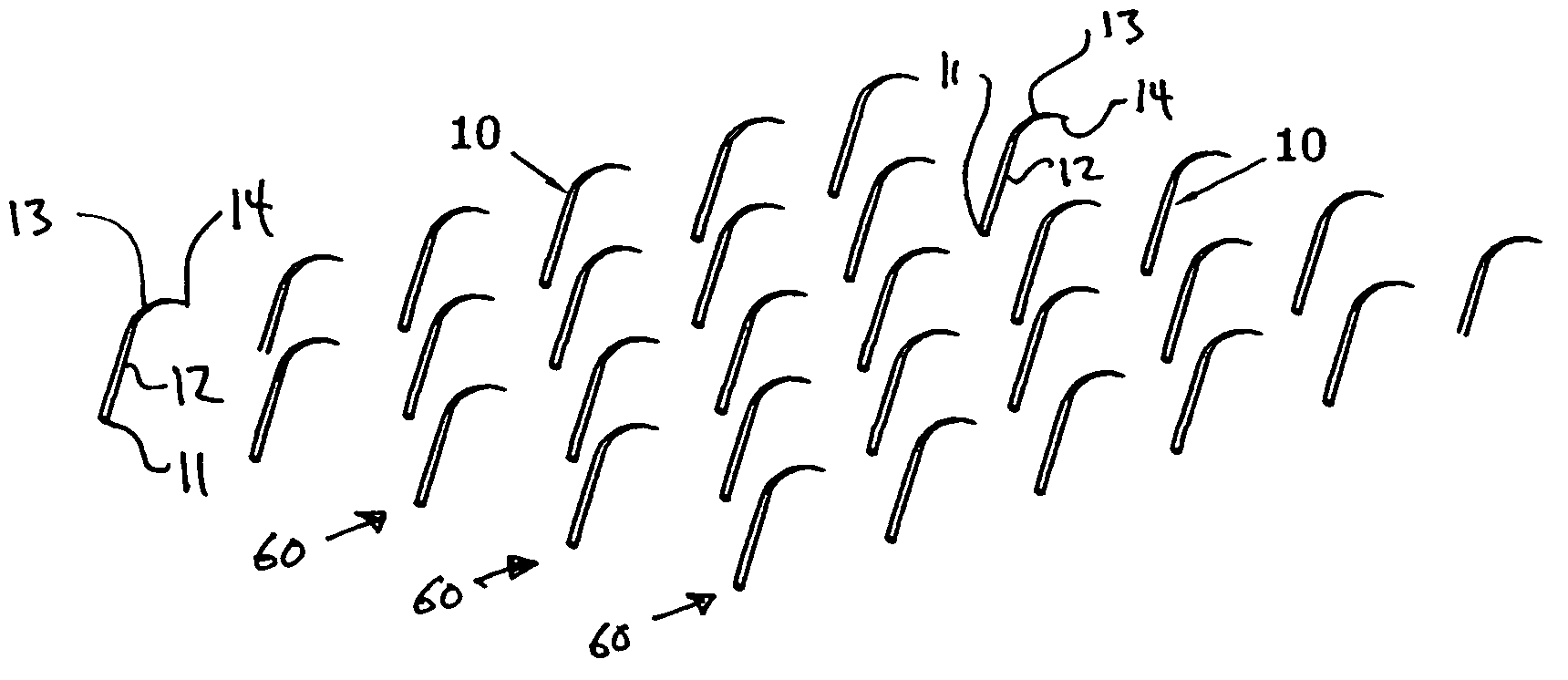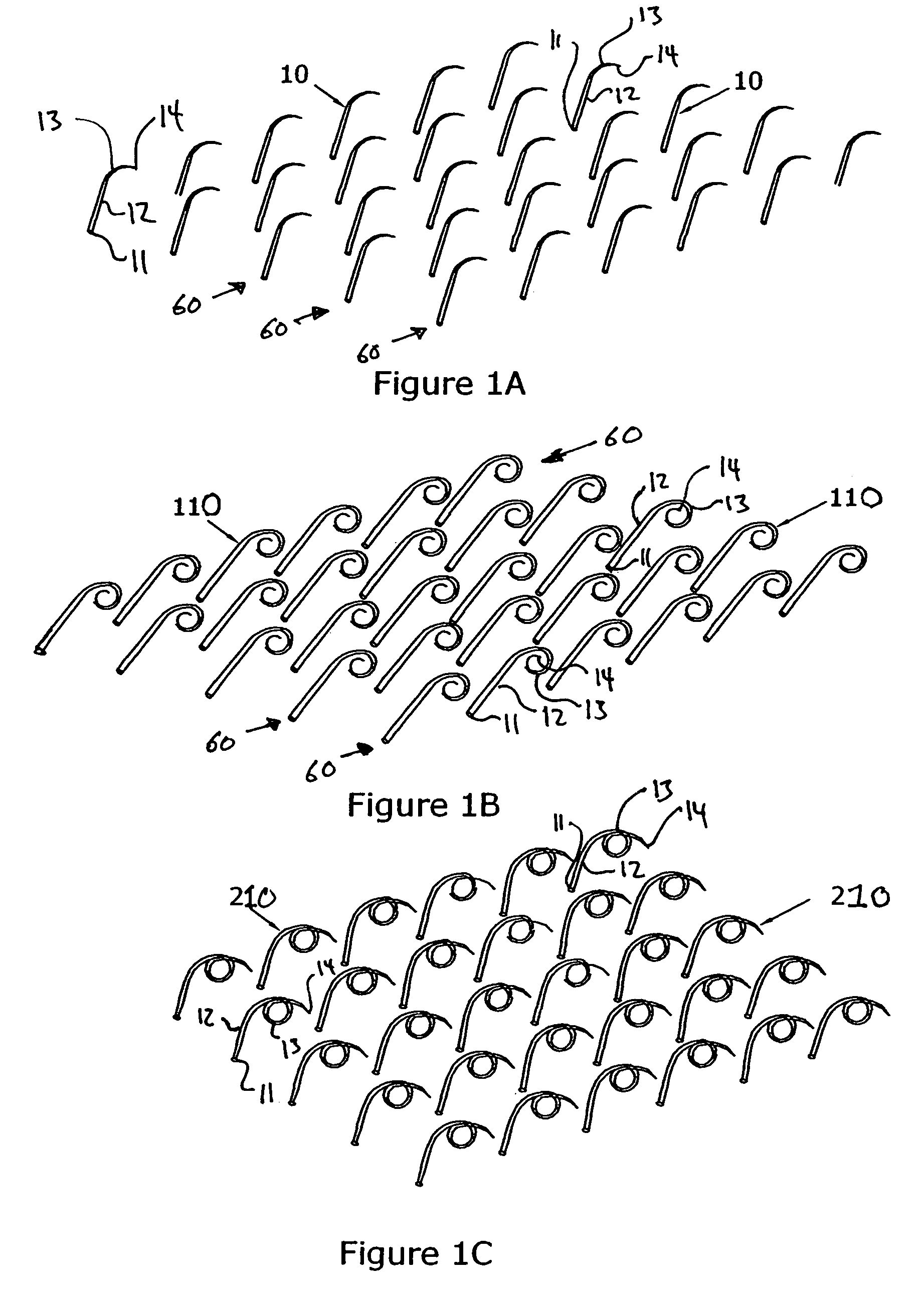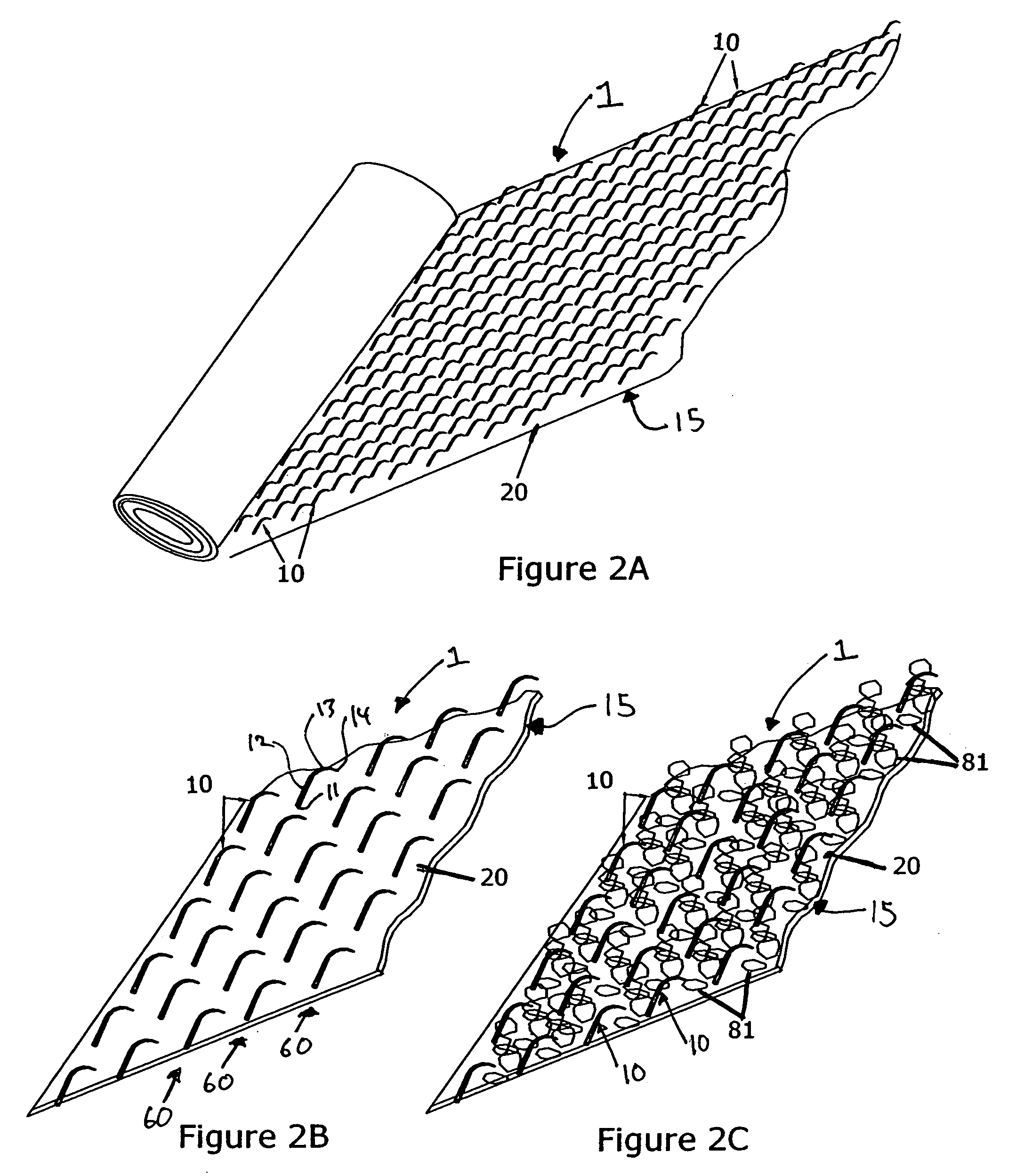Landscape/erosion control product
a technology of erosion control and product, which is applied in the direction of excavation, pier, groynes, etc., can solve the problems of inability to remove and store landscape materials, difficult to spread landscape materials over the top with a tool, and numerous prior art disadvantages in the use of residential and commercial sloped areas, so as to improve the ability to compress, improve the effect of trapping material on slopes and reduce storage volum
- Summary
- Abstract
- Description
- Claims
- Application Information
AI Technical Summary
Benefits of technology
Problems solved by technology
Method used
Image
Examples
Embodiment Construction
[0057]Embodiments of the present invention described and illustrated by figures thus far show many, but not all, of the various combinations with which the elements of the present invention can be assembled.
[0058]The present invention generally comprises a matrix or field of spines 10 for the function of capturing and / or retaining various materials 81. The present invention has particular use on sloped surfaces 82. Embodiments utilizing the spines 10 may be better understood from the following description given in connection with the accompanying drawings.
[0059]The preferred material for the spines 10 of the present invention is a UV resistant, non-porous polyethylene which will resist decay, last for a long time although it is exposed to the elements, and can be reused. It is also possible to make the spines 10 from other similar materials or a combination of materials. The plastic spines 10 of the present invention could be reinforced with metal, carbon or other similar materials....
PUM
 Login to View More
Login to View More Abstract
Description
Claims
Application Information
 Login to View More
Login to View More - R&D
- Intellectual Property
- Life Sciences
- Materials
- Tech Scout
- Unparalleled Data Quality
- Higher Quality Content
- 60% Fewer Hallucinations
Browse by: Latest US Patents, China's latest patents, Technical Efficacy Thesaurus, Application Domain, Technology Topic, Popular Technical Reports.
© 2025 PatSnap. All rights reserved.Legal|Privacy policy|Modern Slavery Act Transparency Statement|Sitemap|About US| Contact US: help@patsnap.com



